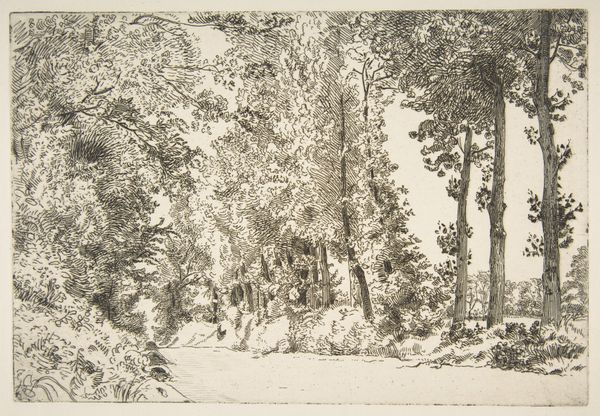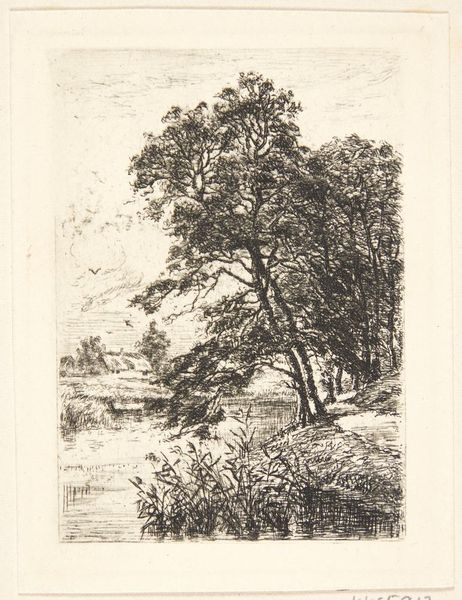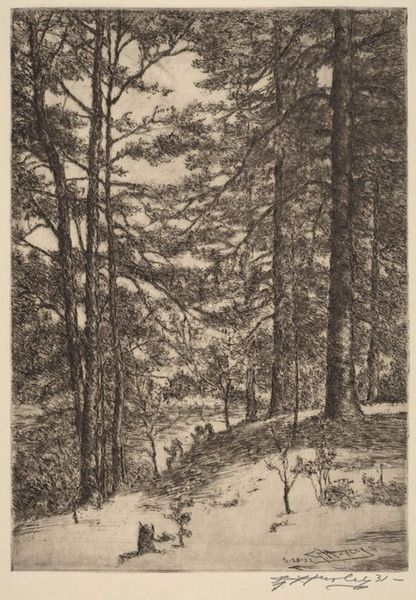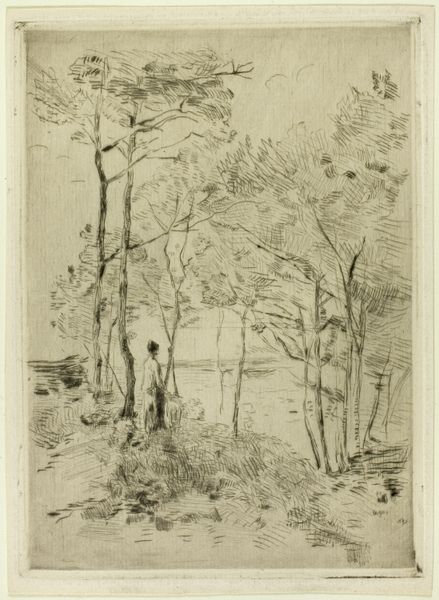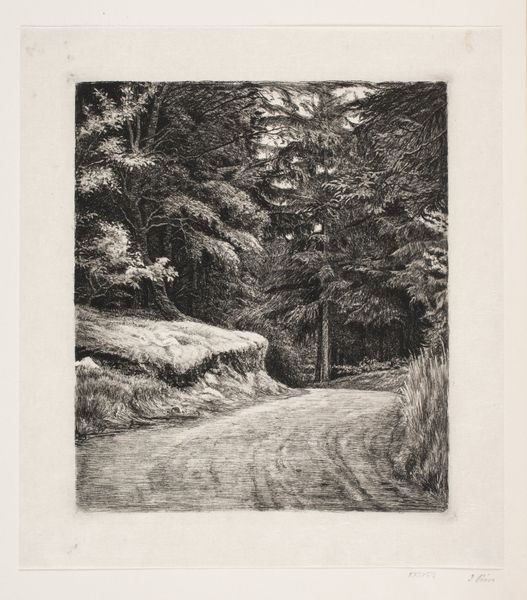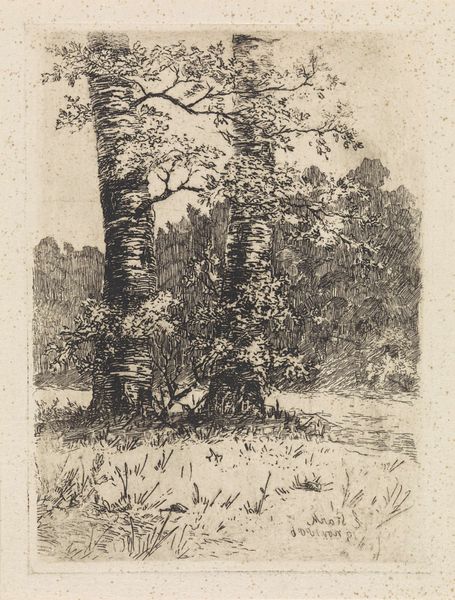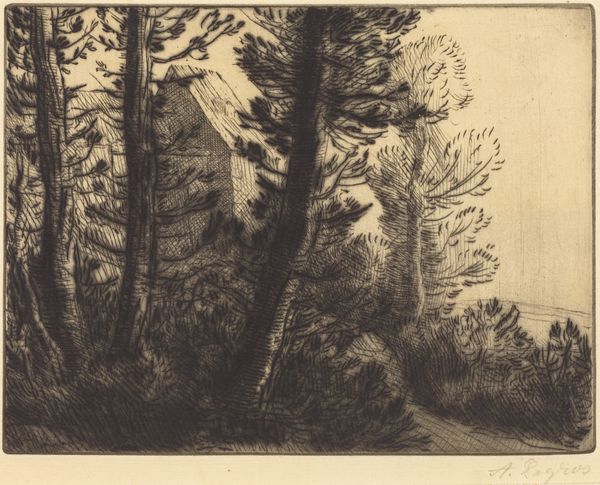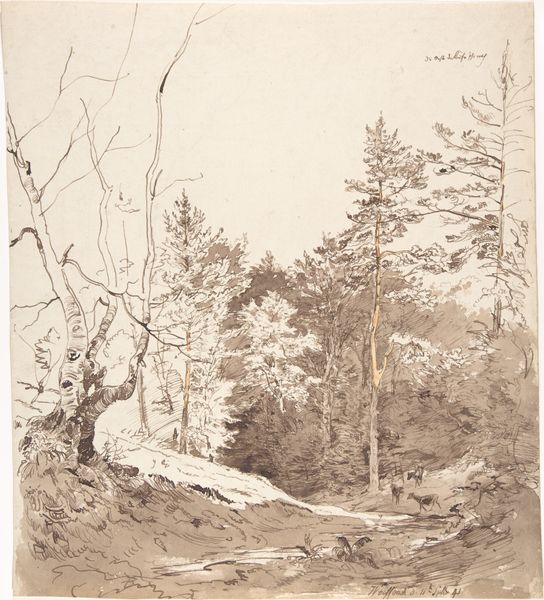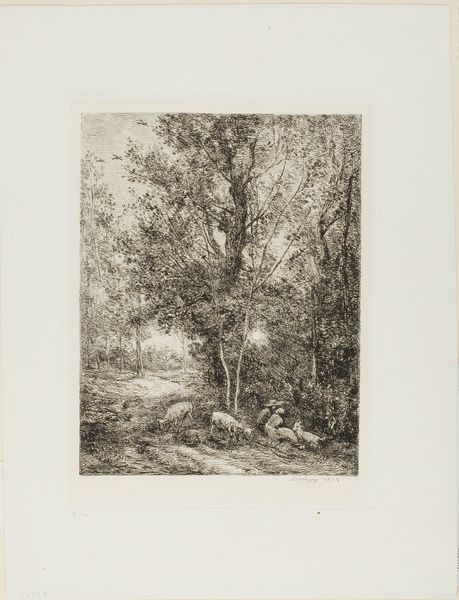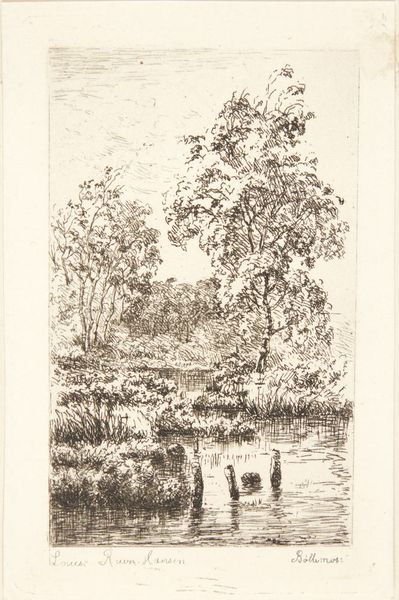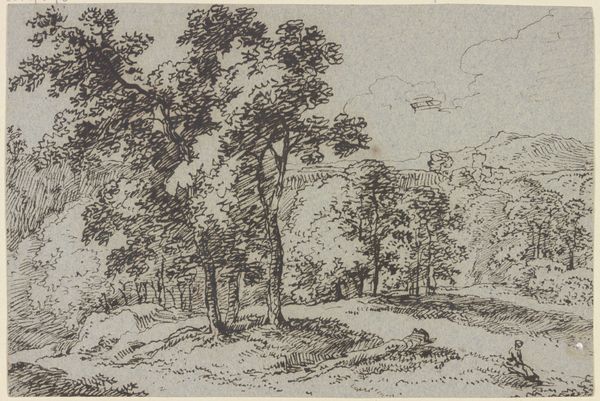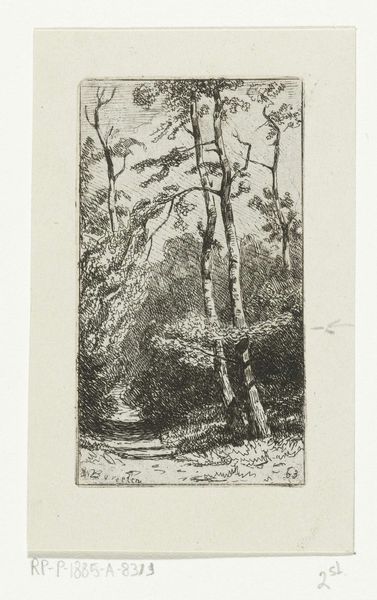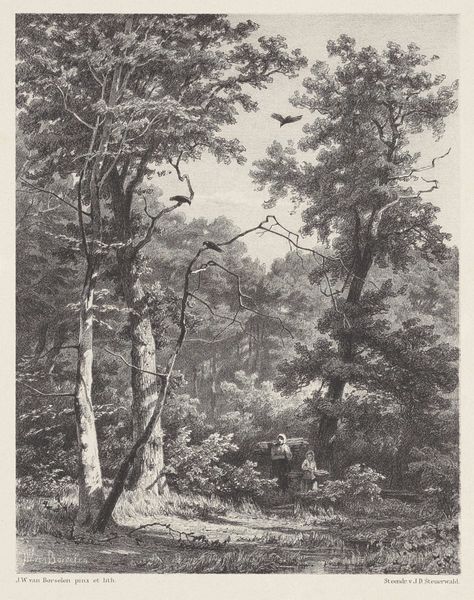
Dimensions: 100 mm (height) x 65 mm (width) (plademål)
Editor: Here we have Louise Ravn-Hansen's "Dyrehaven," an etching from 1898 currently housed at the SMK. The intricate linework creates such a delicate, almost ethereal atmosphere. What compositional elements stand out to you in this landscape? Curator: The most salient feature, I think, is the deployment of line to evoke a sense of depth. Note how the density and direction of the etched lines vary across the surface. Consider the foreground, with its sharp, staccato marks defining the grassy verge, compared to the more atmospheric treatment of the distant foliage. This juxtaposition contributes significantly to the overall illusion of spatial recession. Do you see how the artist balances detail and suggestion? Editor: Absolutely! The way she uses the varying densities of line is remarkable. So, would you say the success of this print hinges primarily on its masterful handling of technique, then, rather than on symbolic representation or cultural context? Curator: Precisely. While one might be tempted to explore potential social or environmental meanings, the work’s aesthetic power derives primarily from its formal qualities. Note, too, the strategic deployment of blank space, which serves not merely as the absence of form but as an active element contributing to the visual dynamism. It emphasizes the density and complexity of the textured areas. Editor: So the negative space really does serve a critical purpose! This focus on form definitely enhances my understanding and appreciation for Ravn-Hansen's printmaking. Thank you! Curator: My pleasure. Studying the formal aspects allows a deeper connection. I shall definitely use this analytical method more often in the future.
Comments
No comments
Be the first to comment and join the conversation on the ultimate creative platform.
